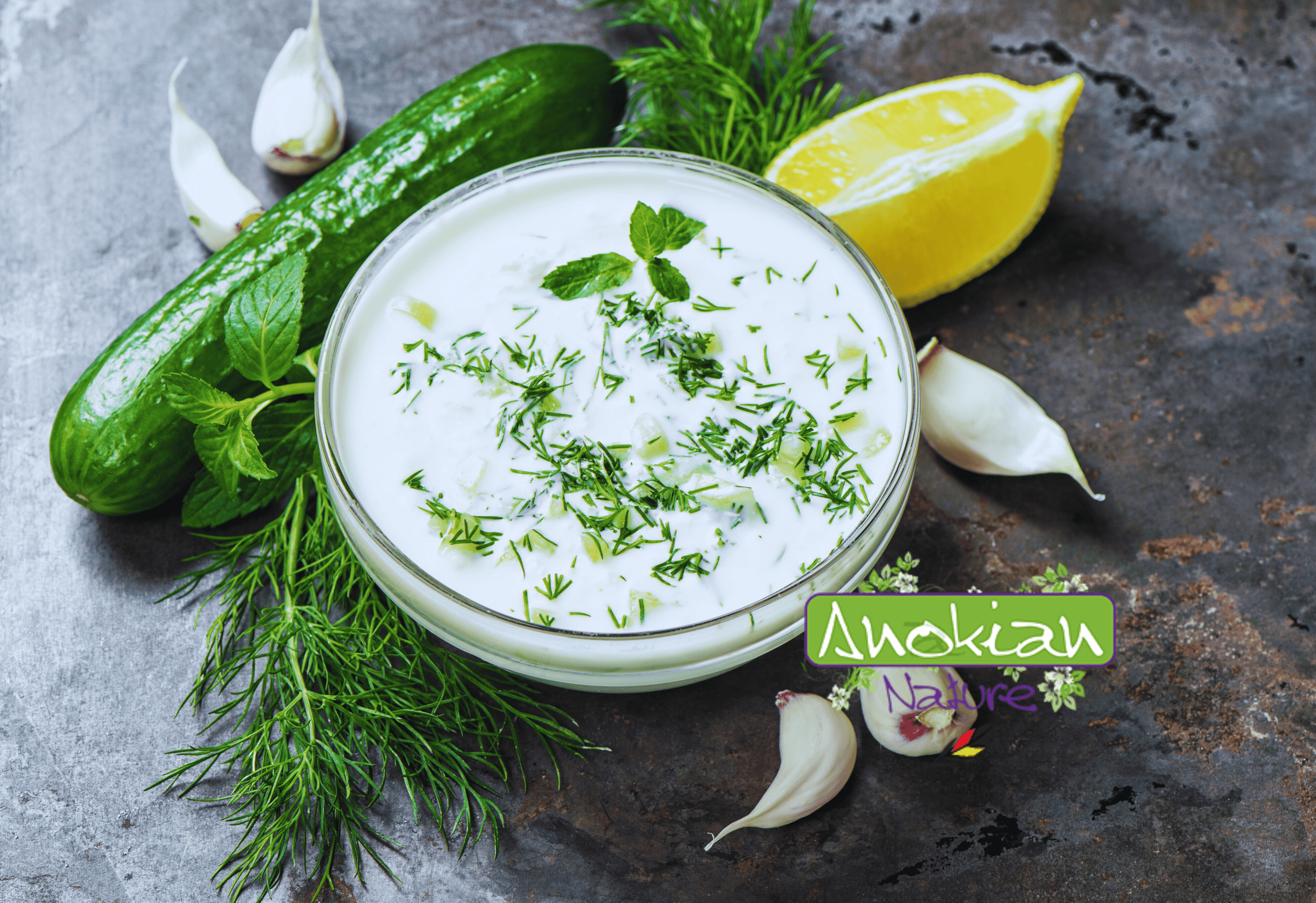Dill is used in many traditional cuisines, including Mediterranean, Nordic, and Eastern European cuisines. Here are some traditional ways to cook with dill:
- In fish dishes:
Dill is particularly popular with fish, especially oily fish like salmon, herring, or trout. It can be used fresh or dried to season fish, especially in recipes like: - Dill Salmon: Dill is often mixed with lemon and butter to season salmon.
Gravlax: A Scandinavian dish where salmon is marinated with salt, sugar, fresh dill, and pepper.
Pickled herring: Dill is also commonly used in herring marinades, a typical dish in Nordic countries.
- In soups and broths:
Dill is a classic ingredient in many soups, such as fish soup or cream soups in Russian and Romanian cuisines. It adds freshness and a light flavor that pairs well with the flavors of creamy or brothy soups.
- In sauces:
Dill is frequently incorporated into sauces such as yogurt sauce or cream sauce, which are often served with fish, vegetables, or potatoes. In Greece, for example, it is used in tzatziki sauce, a sauce made with yogurt, cucumber, garlic, and dill.
Potatoes and dill often go well together. In Russia, new potatoes with dill are often prepared, where the potatoes are boiled and seasoned with fresh dill, butter, and salt.
- In salads:
Dill is an excellent ingredient for seasoning salads, especially cucumber salads, which are very popular in Eastern Europe. It is also added to potato or grilled vegetable salads, adding a fresh and aromatic touch.
- In marinade:
Dill can be used to pickle vegetables, such as cucumbers to make dill pickles, a traditional side dish in many cultures, especially Russian and Balkan cuisine.
- In infusion:
Dill can be used to make infusions, which are often consumed for their digestive benefits. Simply infuse the leaves or seeds of dill in hot water.
Fresh or dried dill is versatile and pairs well with a wide variety of dishes, including those made with fish, vegetables, and dairy products.
Here are some recipes:
- Dill Tzatziki
Ingredients :
500g thick Greek yogurt (or thick natural yogurt)
1 medium cucumber, grated or diced
2-3 tablespoons of extra virgin olive oil
2-3 garlic cloves, crushed
1 handful of fresh dill, finely chopped
1 tablespoon of white wine vinegar or lemon juice
Salt and pepper, to taste
Instructions :
Prepare the cucumber: Grate the cucumber or cut it into small cubes. If you grate the cucumber, squeeze it in a clean cloth or colander to remove excess water so the tzatziki doesn't become too runny.
Mix ingredients: In a bowl, combine Greek yogurt, prepared cucumber, crushed garlic, olive oil, vinegar or lemon juice, and chopped dill. Stir well to combine all ingredients.
Season: Add salt and pepper to taste. You can also add a little more dill if you like its strong flavor.
Refrigerate: Cover the bowl and let the tzatziki sit in the refrigerator for at least 30 minutes, preferably an hour or more. This allows the flavors to blend well and the dill to diffuse into the sauce.
Serving: Serve this fresh tzatziki as a side dish with grilled meats (like chicken or lamb), grilled vegetables, fries, or simply as a dip with pita bread.
- Gravlax (salmon marinated with dill)
Ingredients :
1 kg of fresh salmon fillet, skinless
50 g of salt
50 g of sugar
1 tablespoon of crushed black pepper
1 bunch of fresh dill, roughly chopped
The zest of one lemon (optional)
1 tablespoon coriander seeds (optional)
Instructions :
Prepare the salmon: Place the salmon fillet on a large sheet of plastic wrap or in a large dish. Make sure the fish is fresh and boneless.
Prepare the marinade mix: In a small bowl, combine the salt, sugar, black pepper, chopped dill, and lemon zest (if using). Optionally, add coriander seeds for a spicy kick.
Apply the marinade: Spread this mixture over the salmon, spreading it well over the entire surface of the fish flesh.
Marinate the salmon: Carefully wrap the salmon in plastic wrap or place it in a covered dish. Refrigerate for 24 to 48 hours, turning it once or twice during the marinating time to ensure even absorption of the marinade.
Serving: After marinating, the salmon is ready to eat. Slice it thinly with a sharp knife. It can be served with rye bread, cucumber slices, capers, and a drizzle of mustard and honey.
- Dill Soup (or Dill and Potato Soup)
This simple and tasty soup is popular in Eastern and Northern European countries.
Ingredients :
4 potatoes, cut into cubes
1 onion, chopped
1 liter of vegetable or chicken broth
1 handful of fresh dill, chopped
1 tablespoon of butter
Salt and pepper, to taste
Crème fraîche (optional)
Instructions :
Melt the butter in a large saucepan and sauté the onion until translucent.
Add the potatoes and broth. Cook over medium heat until the potatoes are tender (about 20-25 minutes).
Add the chopped dill and season with salt and pepper.
If you like, you can add a spoonful of crème fraîche before serving to make the soup even creamier.
Bon appetit!









